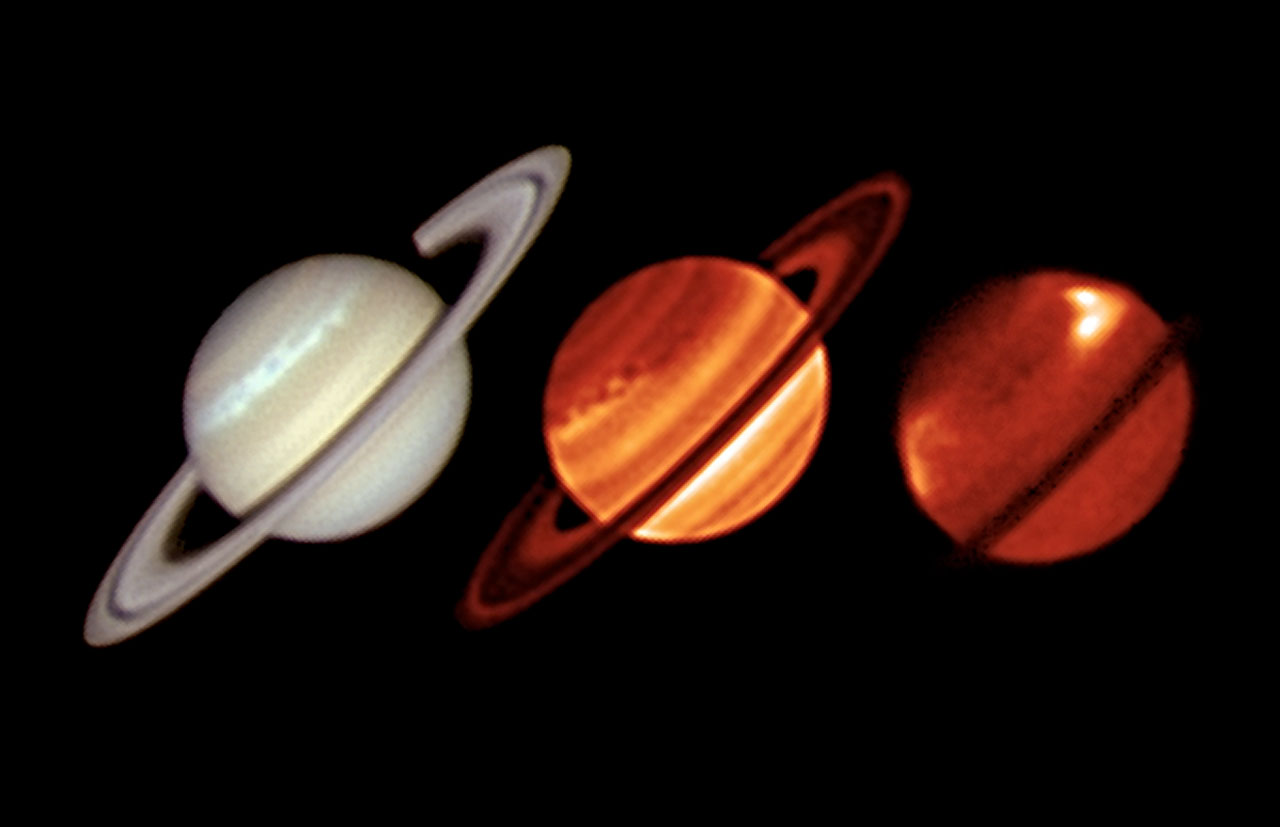"April showers bring May flowers" sounds lovely, but whoever said that has never been to Saturn. Nor have any of us, but you get the idea. We've detected six storms since 1876 but this is the first ever to be studied in the thermal infrared, which allows researchers to see the variations of temperature within a Saturnian storm and this was also the first to be observed by an orbiting spacecraft. It has now been studied in detail using the VISIR infrared camera on ESO’s Very Large Telescope (VLT) in conjunction with observations from the CIRS instrument on Cassini.
The storm may have originated deep down in the water clouds where a phenomenon similar to a thunderstorm drove the creation of a giant convective plume: just as hot air rises in a heated room, this mass of gas headed upwards and punched through Saturn’s usually quieter upper atmosphere. These huge disturbances interact with the circulating winds moving east and west and cause dramatic temperature changes high up in the atmosphere.

Thermal infrared images of Saturn from an amateur visible-light image (left) by Trevor Barry (Broken Hill, Australia) and the VISIR instrument on ESO’s VLT (center and right) obtained on 19 January 2011 during the mature phase of the northern storm. The second image is taken at a wavelength that reveals the structures in Saturn’s lower atmosphere, showing the churning storm clouds and the central cooler vortex. The third image is sensitive to much higher altitudes in Saturn’s normally peaceful stratosphere, where we see the unexpected beacons of infrared emission flanking the central cool region over the storm. Credit: ESO/University of Oxford/L. N. Fletcher/T. Barry
“Our new observations show that the storm had a major effect on the atmosphere, transporting energy and material over great distances, modifying the atmospheric winds — creating meandering jet streams and forming giant vortices — and disrupting Saturn’s slow seasonal evolution,” said team member Glenn Orton of Jet Propulsion Laboratory.
Some of the unexpected features seen in the new imaging from VISIR have been named stratospheric beacons. These are very strong temperature changes high in the Saturnian stratosphere, 250-300 km above the cloud tops of the lower atmosphere, that show how far up into the atmosphere the effects of the storm extend. The temperature in Saturn’s stratosphere is normally around -130 degrees Celsius at this season but the beacons are measured to be 15-20 degrees Celsius warmer.
The beacons are completely invisible in reflected sunlight but can outshine the emission from the rest of the planet in the thermal infrared light detected by VISIR. They had never been detected before, so astronomers are not sure if they are common features in such storms.
“We were lucky to have an observing run scheduled for early in 2011, which ESO allowed us to bring forward so that we could observe the storm as soon as possible. It was another stroke of luck that Cassini’s CIRS instrument could also observe the storm at the same time, so we had imaging from VLT and spectroscopy of Cassini to compare,” said Leigh Fletcher of Oxford, lead author of the new study in Science. “We are continuing to observe this once-in-a-generation event.”





Comments